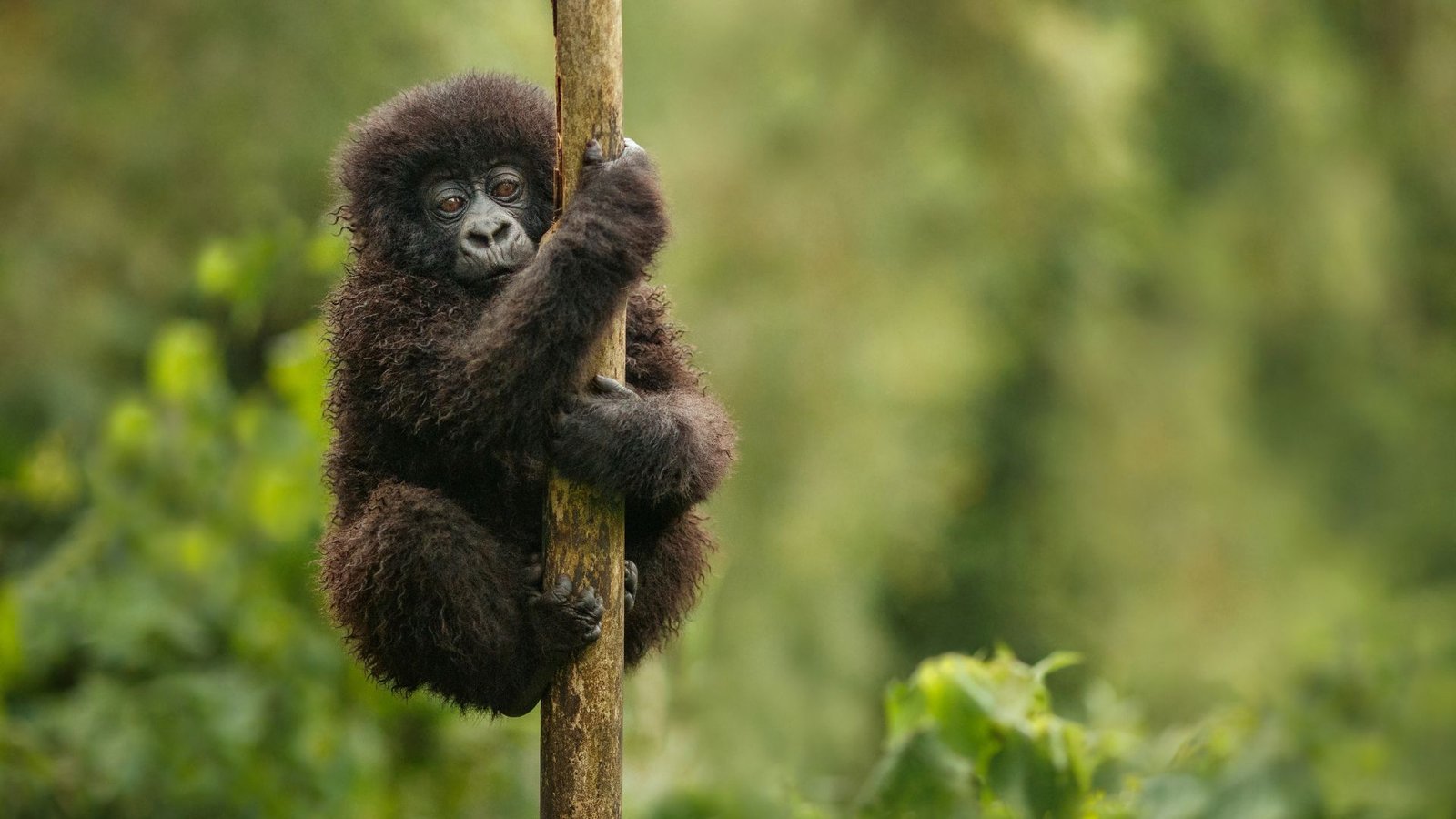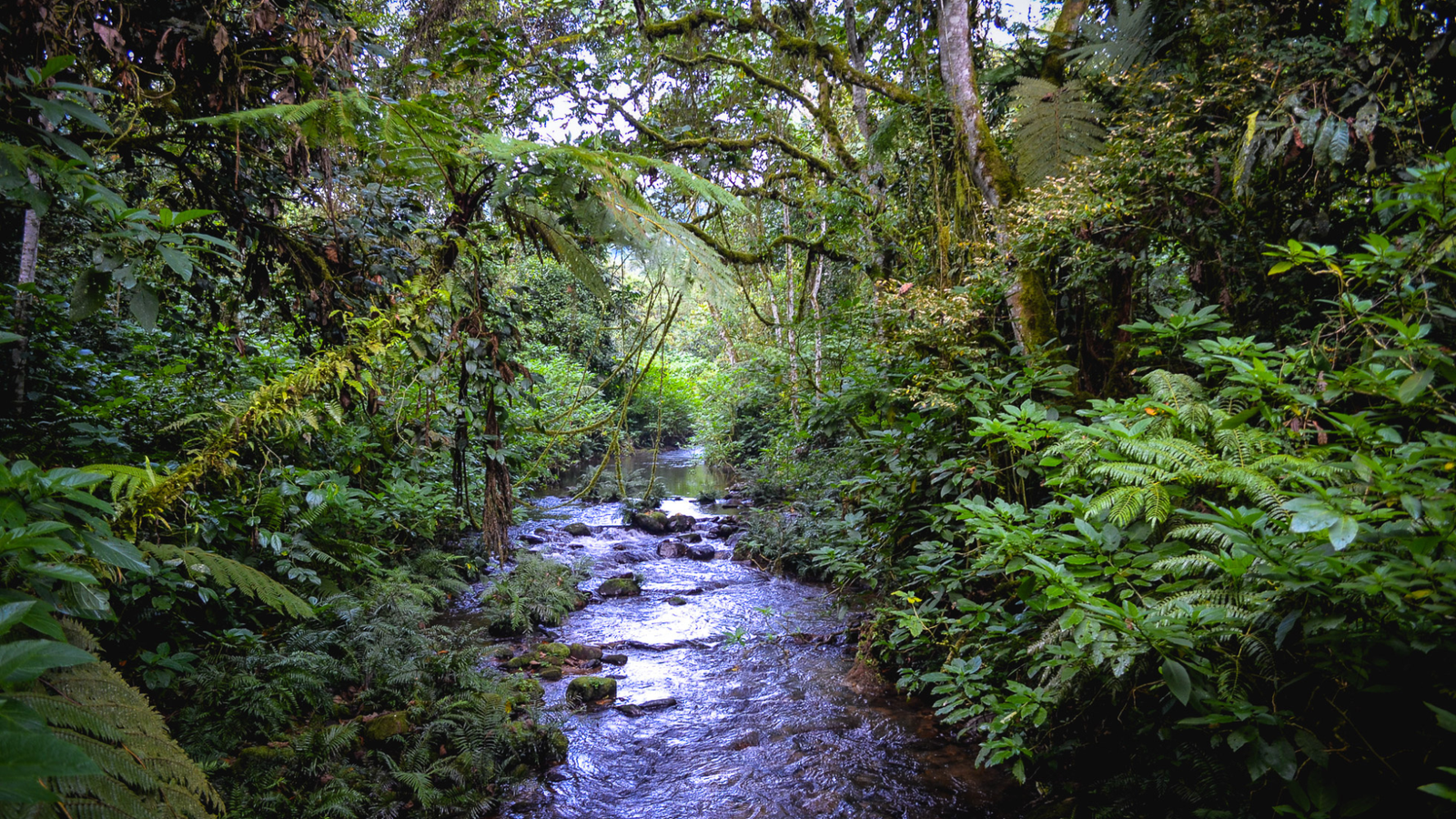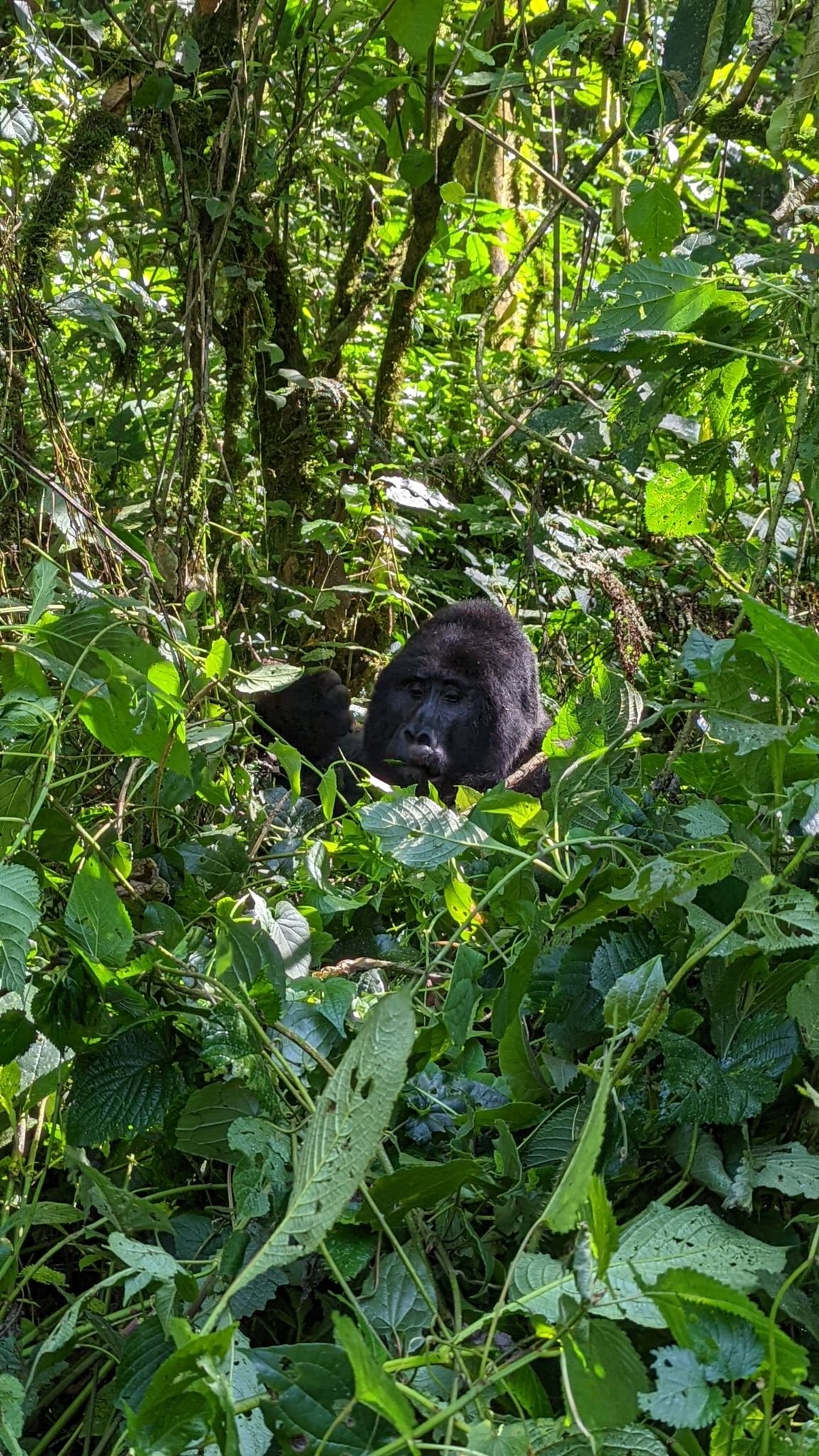THE ULTIMATE GUIDE TO GORILLA TREKKING IN UGANDA

The Ultimate Guide to Gorilla Trekking in Uganda: the Best Wildlife Adventure
Gorilla trekking is one of the best wildlife activities in the world. In my opinion, it might be even better than a safari. It brings you face to face with the majestic mountain gorillas in their natural habitat. In this comprehensive guide, we’ll delve into the ins and outs of gorilla trekking in Uganda, addressing key questions and highlighting why Uganda stands out as the ultimate destination for this once-in-a-lifetime encounter
Why Choose Gorilla Trekking in Uganda?
Uganda, often referred to as the “Pearl of Africa,” boasts lush landscapes and diverse ecosystems, making it a prime destination for gorilla trekking. Unlike Rwanda and the Democratic Republic of Congo (DRC), Uganda offers a unique combination of affordable permits, well-preserved habitats, and a stable political environment, making it the preferred choice for many avid gorilla enthusiasts.
Why not go gorilla trekking in Rwanda or the Democratic Republic of Congo (DRC)?
Rwanda has done an excellent job at marketing, has excellent tourism infrastructure and its capital is now known as the “cleanest city in Africa”. This status comes with a price tag. The gorilla trekking permit here is $1500 USD per person. The DRC, on the other hand, has been going through a civil war for years. Yes, the permits here are only $400 USD per person, but this destination is not advisable for travelers that are not extremely experienced.
Opinions may vary as to how safe or unsafe it is to go gorilla trekking here. I am not a fan of travel advisories, but this is one of those instances where they are accurate. The DRC visa is also not particularly easy to get (unless you get a permit for a national park) and this is another reason why Uganda might be your best option. Please remember that this is the same species in the same area. They’re just divided by man-made borders.

Cost of Gorilla Trekking in Uganda:
One of the most frequently asked questions is, “How much does gorilla trekking in Uganda cost?” The cost of a gorilla trekking permit in Uganda is generally more budget/safety friendly compared to its counterparts in Rwanda and the DRC. As of early 2024, permits in Uganda were priced at $700 USD. This price will increase to $800 USD in July of 2024. African citizens from other countries will pay $500 USD and the East African community pay 300,000 Ugx per person.
The Ugandan visa (most citizens need it) is also extremely easy to secure. You can apply online for the cost of $50 USD. The East Africa visa, for $100 USD, can also allow you to move in the neighboring countries. Uganda is safe, has political stability and offers a good midrange price for this bucket list activity.
Why are gorilla trekking permits so expensive
There are a number of reasons why the permits are so expensive. Before conservation efforts were put in place, the hunting of the gorillas and illegal trading was at an all-time high. This decreased the numbers to around 600 left. This means 600 left in the whole world! It has now increased to 1100 over the last few decades. This may not sound like much, but it is not easy for gorillas to breed. And yet, the conservation of gorillas in this region is one of the most successful conservation initiatives in the whole of Africa.
This is what you’re paying towards:
- Fair wages: this prevents people from engaging in poaching, and works as an incentive for them to protect them
- Community development: the government specifically gives a percentage of the funds to developing local businesses, building roads and schools. Once you visit you’ll see how much of the economy runs because of these conservation efforts.
- Training: by providing training for the tourism sector, this ensures that locals have a sustainable livelihood.

Conservation Efforts
- Protection of the gorillas: Gorillas can be sold for their meat, for them to be sent to a hunting safari, or for them to be shipped to a zoo. They cannot survive for long outside of this region. They need to be protected at all times by rangers. This is a 24/7 effort that is necessary for their survival.
- Avoiding overtourism: let’s face it. This activity is not cheap. They could have hundreds of people, even thousands visiting the gorillas every day. Not only is this not healthy for them, but it also disturbs them and might interfere with their breeding. By limiting the amount of people that visit them with high prices, they can cover the costs necessary for their protection.
I did my gorilla trekking in Bwindi Impenetrable Forest. In the whole of Uganda, only 96 permits are given out DAILY. Each group, of 6-8 people, is assigned to one gorilla family. The family assigned has been exposed to humans already. You only get to spend ONE hour with them once you’ve found them.
Difficulty of Gorilla Trekking in Uganda
Gorilla trekking in Uganda is a moderate to challenging activity that requires a reasonable level of physical fitness. The trek can vary in difficulty based on the chosen gorilla family and their location within the Bwindi Impenetrable Forest or Mgahinga Gorilla National Park. Trekkers should be prepared for uneven terrain, steep slopes, and possible encounters with rain.
Before your trek begins, you will be assigned to a group of guides. This is when you need to be specific about your fitness/health level, to make sure you get assigned to the right group. I personally chose the easiest one due to my breathing problems, and found it fairly easy. You can also pay a porter to help carry your bag, and even hold your arm whenever necessary. These cost around $20 USD per person and are an excellent source of income for locals.

Best Month for Gorilla Trekking in Uganda
The best time for gorilla trekking in Uganda is during the dry seasons, which typically occur from June to September and December to February. These months provide more stable weather conditions, making trekking trails more manageable. However, permits are in high demand during these peak seasons, so it’s advisable to book well in advance to secure your spot. Do not forget that there are less than 100 gorilla trekking permits available per day. Plan wisely.
Safety of Gorilla Trekking in Uganda
Safety is a top priority for Uganda’s tourism authorities. Gorilla trekking activities are well-regulated, and park rangers accompany visitors throughout the trek, ensuring a secure and controlled environment. The gorillas also do not get exposed to humans for long periods of time. After all, you have the privilege to visit them. Conservation efforts are in place to make sure you have a good time in a safe manner, while they’re protected at all times.

Where can you secure your permits from?
I would highly suggest you go through an agency. Not only are permits limited, accommodation is too, especially during high season. They will be the best choice to secure both. If you’re looking for recommendations, I highly suggest you contact Buutu Safaris. I worked with them back in 2022. This is a Ugandan family business that has been running for almost 30 years, and they were the first ones to establish travel services in the Jinja area. This area is also known as the Adrenaline Capital of East Africa if you want to hire their services there and check it out.
Gorilla trekking in Uganda is a captivating adventure that offers a unique opportunity to connect with these incredible creatures in their natural habitat. With its affordable permits, diverse landscapes, and commitment to safety, Uganda stands out as the ultimate destination for gorilla enthusiasts seeking an unforgettable journey. Plan your gorilla trekking adventure in Uganda, and get ready to witness the awe-inspiring beauty of these magnificent creatures.

Hey there, and welcome to Go Global with Sibu! I’m a global citizen that has been living and traveling around the world since 2005 – all through budget travel, scholarships, study/work and living abroad opportunities. I share everything I’ve learned over the years here – to prove to you that you don’t need money or privilege to enjoy everything that this world has to offer.